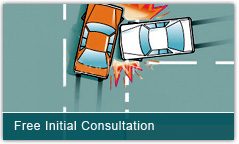Motorcycle Incidents
At Forensic Dynamics we have a wealth of experience with the interpretation of evidence related to motorcycle collisions. Further, as all testifying experts at FDi are avid motorcyclists, we understand rider behavior in accident situations. This is vital to properly reconstructing an accident involving this type of vehicle. For example, motorcycles do not steer as passenger vehicles do, nor do they brake similarly (a vast majority of motorcycles for example have an independent front and rear brake). With the number of motorcycle registrations skyrocketing in the past decade and the age of the average motorcyclist increasing, these types of reconstructions are becoming more and more common.
Often, it is necessary to procure a surrogate motorcycle to perform various tests (braking, cornering, and acceleration, among others). Salvaged motorcycles can be intentionally slid along a surface on their side in order to more accurately determine an appropriate coefficient of friction.
Claims made by motorcyclists that the road contributed to their loss of control are also on the rise. Surface irregularities (for example a pot hole) present at the time of the accident are often repaired prior to our involvement. Once again, we rely on photographs to photo reconstruct the nature of the surface irregularity. Then, given the type of motorcycle and the skill level of the motorcyclist involved, a determination can be made as to whether this could have comprised loss of control. Naturally, speed is also determined to see how this may have affected the outcome.
In short, FDi knows bikes! In this particular niche of accident reconstruction engineering, it is vital to have an expert that can not only crunch the appropriate numbers, but who also understands the intricacy of motorcycle operation.





